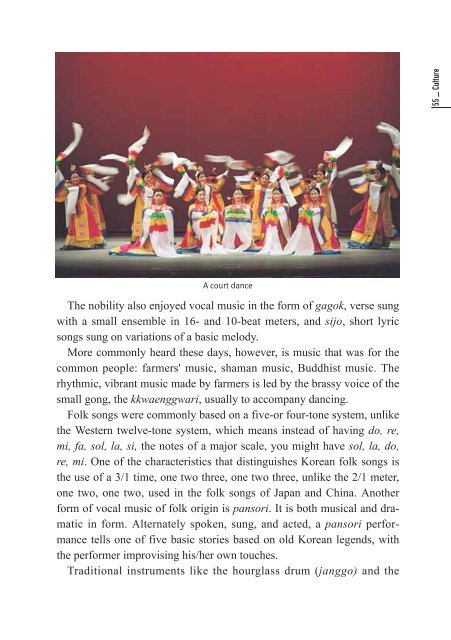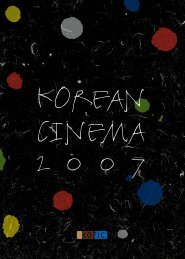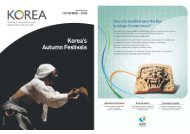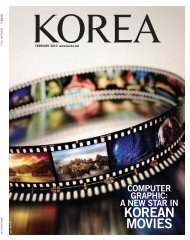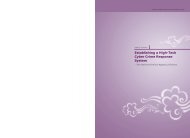HELLO from KOREA
Hello-Eng(3.3) - Korea.net
Hello-Eng(3.3) - Korea.net
- No tags were found...
Create successful ePaper yourself
Turn your PDF publications into a flip-book with our unique Google optimized e-Paper software.
55 _ Culture<br />
A court dance<br />
The nobility also enjoyed vocal music in the form of gagok, verse sung<br />
with a small ensemble in 16- and 10-beat meters, and sijo, short lyric<br />
songs sung on variations of a basic melody.<br />
More commonly heard these days, however, is music that was for the<br />
common people: farmers' music, shaman music, Buddhist music. The<br />
rhythmic, vibrant music made by farmers is led by the brassy voice of the<br />
small gong, the kkwaenggwari, usually to accompany dancing.<br />
Folk songs were commonly based on a five-or four-tone system, unlike<br />
the Western twelve-tone system, which means instead of having do, re,<br />
mi, fa, sol, la, si, the notes of a major scale, you might have sol, la, do,<br />
re, mi. One of the characteristics that distinguishes Korean folk songs is<br />
the use of a 3/1 time, one two three, one two three, unlike the 2/1 meter,<br />
one two, one two, used in the folk songs of Japan and China. Another<br />
form of vocal music of folk origin is pansori. It is both musical and dramatic<br />
in form. Alternately spoken, sung, and acted, a pansori performance<br />
tells one of five basic stories based on old Korean legends, with<br />
the performer improvising his/her own touches.<br />
Traditional instruments like the hourglass drum (janggo) and the


